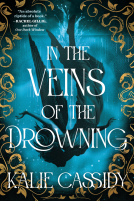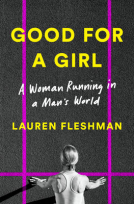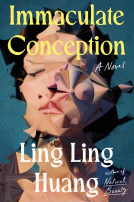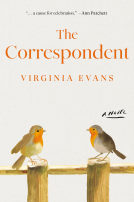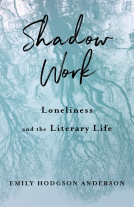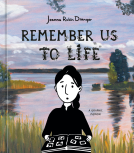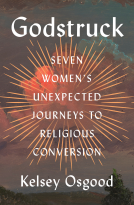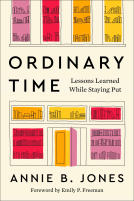
The Treeline
The Last Forest and the Future of Life on Earth
by Ben Rawlence
This title was previously available on NetGalley and is now archived.
Send NetGalley books directly to your Kindle or Kindle app
1
To read on a Kindle or Kindle app, please add kindle@netgalley.com as an approved email address to receive files in your Amazon account. Click here for step-by-step instructions.
2
Also find your Kindle email address within your Amazon account, and enter it here.
Pub Date Feb 15 2022 | Archive Date Mar 01 2022
Talking about this book? Use #TheTreeline #NetGalley. More hashtag tips!
Description
Winner of the 2023 Helen Bernstein Book Award for Excellence in Journalism
"Original and readable." ―Financial Times' Best Environmental Books of 2022
"Superb, inspiring." ―Winner, National Academies of Science Schmidt Awards for Excellence in Science Communications
“Illuminating.” —Silver Medalist, National Outdoor Book Awards
Longlisted for the American Library Association's 2023 Carnegie Medal for Excellence in Nonfiction
Finalist, 2023 Banff Mountain Book Competition
Finalist, 2023 Dayton Literary Peace Prize
In the tradition of Elizabeth Kolbert and Barry Lopez, a powerful, poetic and deeply absorbing account of the “lung” at the top of the world.
For the last fifty years, the trees of the boreal forest have been moving north. Ben Rawlence's The Treeline takes us along this critical frontier of our warming planet from Norway to Siberia, Alaska to Greenland, Canada to Sweden to meet the scientists, residents and trees confronting huge geological changes. Only the hardest species survive at these latitudes including the ice-loving Dahurian larch of Siberia, the antiseptic Spruce that purifies our atmosphere, the Downy birch conquering Scandinavia, the healing Balsam poplar that Native Americans use as a cure-all and the noble Scots Pine that lives longer when surrounded by its family.
It is a journey of wonder and awe at the incredible creativity and resilience of these species and the mysterious workings of the forest upon which we rely for the air we breathe. Blending reportage with the latest science, The Treeline is a story of what might soon be the last forest left and what that means for the future of all life on earth.
Advance Praise
"What an extraordinary book this is! Rawlence writes with elegant clarity about a world knocked out of whack. The Treeline is a fine work of science journalism, an adventure tale that tracks the shifting fortunes of the planet’s northernmost forests, a record of the cruel legacies of capitalism and colonialism. Most of all it is a sustained act of attention, of observing and listening to a land that observes and listens back. This is not just a description of a warming world but an active invitation to live differently, to participate with wisdom and humility in the cacophonous and ever-unfinished abundance of terrestrial life." —Ben Ehrenreich, author of Desert Notebooks: A Roadmap for the End of Time
"A fascinating book drawing on a brilliant, original line of thinking to reveal the roots and reach of our changing boreal forests. Once again, Rawlence delivers a perfect combination of lyrical writing and rigorous reporting. Utterly illuminating." —Sophy Roberts, author of The Lost Pianos of Siberia
"In this beautiful homage to the world’s northernmost forests, Ben Rawlence brings the zeal of a journalist and the heart of a naturalist to his journey following the treeline east into the rising sun. As Rawlence explores vast wildwoods of pine, birch, larch, and spruce, he uses alluring prose to present fascinating and challenging ideas of what a forest is: not a static place on a map but a creative, evolutionary process—a “mobile community." Rawlence documents how the treeline is now undergoing one of its greatest transformations with enormous consequences for humanity and the planet. By focusing his formidable curiosity and craft on the arboreal biosphere, Rawlence has given both trees and people an enormous gift." —M.R. O'Connor, author of Wayfinding
“Our trees are on the move but we have no place left to go. The Treeline is a moving, thoughtful, deeply reported elegy for our vanishing world and a map of the one to come." —Nathaniel Rich, author of Losing Earth and Second Nature
"Rawlence takes us on an unforgettable personal tour of the major treelines of the Northern Hemisphere. His prophetic insights on how global climate change is rapidly rewriting the boundaries and biodiversity of earth’s boreal forests are colored by the insights of the botanists, glaciologists, and indigenous peoples he met along the way. The Treeline is a page-turner that poetically challenges us to confront the elephant in the room." —James McClintock, author of Lost Antarctica and A Naturalist goes Fishing
"Urgent and insightful tour of some of the world’s strangest, most bewitching and most endangered environments... A tribute to indigenous wisdom, a paean to the otherworldly beauty of the taiga and the tundra, and a highly readable overview of the latest science. This is an important book, and one I will be pressing into other people’s hands." —Cal Flyn author of Islands of Abandonment
"The very treeline is on the move: a devastating image. This book is an evocative, wise and unflinching exploration of what it will mean for humanity." —Jay Griffiths, author of A Sideways Look at Time
Marketing Plan
"*Early Reader Review Campaign
*National IndieBound Campaign
*Netgalley Promotion
*Email Marketing Campaign
*Bookstagrammer/Booktuber Campaign
*Organizational Outreach
*Library Marketing Campaign
*Academic Marketing Campaign
*Social Media Campaign
*Macmillan Speaker's Bureau
*Author Twitter: BenRawlence"
Available Editions
| EDITION | Other Format |
| ISBN | 9781250270238 |
| PRICE | $29.99 (USD) |
| PAGES | 304 |
Featured Reviews
As an artist focused on the natural world, I loved how Rawlence shared the science through a beautiful journey and tribute to what should be our most treasured allies—trees. Specifically, he focuses on the harsh climates in the north and the types that survive up there. Through his journey, he shares insight into what this means for us now and in the future, but he also shares his wonder and great respect for these species. Rawlence is unflinching in his journalistic approach, pressing the urgency alongside thoughtful information to inspire a reader’s interest, but more importantly to inspire action. There’s a rich artistry in his writing and in his passion, and I look forward to sharing this with others.
This books is wonderful and really informative! I really enjoyed reading The Treeline and learning about the last rainforest. I like how this book addresses climate change and talks about trees in a way that is with love.
 Reviewer 510705
Reviewer 510705
You might think a book about trees, particularly the most northerly trees in the world, couldn't be moving but you'd be wrong. Treeline is full of science but also heart and culture. You'll come away with a profound understanding of how interconnected nature is, how trees and the ecosystems they are part of are complex and astonishing and so, so critical for humans. You'll also worry for what is being lost, for what has already been lost. I hope it inspires you to take action. Every bit of carbon pollution we can avoid helps minimize the scale of change that is coming for the forests, and for us. This book made me more passionate than ever about doing all we can to protect the brilliant diversity of nature still with us.
I have so many favourite quotes from this book but I'll leave you with this one: "If we want to be part of the assemblage of species that co-evolves to survive the coming upheaval then we need to revive that essential entanglement with other living things."
(Thanks to the publisher for the free review copy via NetGalley)
“A forest is not a static thing; it is a constantly evolving mosaic of species in multiple relations with each other as well as with the rocks, the atmosphere and the climate.”
A fascinating look at the changing forest treeline and the effects of global warming. The author does a great job breaking down and explaining concepts; defining scientific words that the average reader would not be familiar with. I also appreciate the glossary of trees in the back.
Thank you Netgalley and St. Martin’s Press for this ARC. This is an interesting book I would strongly consider adding to my library.
Lyrical Anthropological Examination That Needs Better Scientific Documentation. When Rawlence is describing the people and peoples he is traveling to and among, he has such a lyrical quality to his prose here that it really is quite beautiful - these are the best parts of this book. However, Rawlence is also quite the pessimist about human action and survival, going on at one point to proclaim that Earth would be better off without humanity. While this is not an unheard of proposition, fantastical claims like that require substantial documentation - and documentation is what this text sorely lacks, clocking in at barely 10% of the overall text (25-30% being more "normal", and I've read books making far less fantastical claims clocking in north of 40% documentation). Ultimately, your opinion of the book is likely going to depend on whether you agree with Rawlence's politics and philosophies, though, again, the writing when he is *not* speaking to these really is quite beautiful. Still, even in what he does present and even with the lack of documentation, this is a book that needs to be read by most anyone speaking to any level of climate science, as he does bring up some truly valid points here and there. Recommended.
An interesting example of modern British nature writing. The author combines a travelog, a popular science book, and a personal essay into a coherent and engaging story.
The northern forests receive far less attention than their southern equivalents so it's refreshing to learn more about them. Yes, they are not as colorful and diverse as tropical jungles but can be no less fascinating. You will learn that from this book, and much more – there are a lot of surprising scientific facts here (not only about the boreal tree species). It also brings an interesting new perspective on the issue of the climate crisis and nature conservation, with many examples of possible strategies and actions.
Thanks to the publisher, St. Martin, and NetGalley for an advanced copy of this book.
 Abby S, Reviewer
Abby S, Reviewer
A fascinating look at the last rain forest.The author has written an informative book that I was engaged in.I learned about the forest,climate change and other topics.The author writes in a style that kept me interested in him and the information he. Is sharing.A book I will be recommending.#netgalley#st.Martins books.
 Mike H, Reviewer
Mike H, Reviewer
The Treeline by Ben Rawlence It is perhaps one hundred years since the completion of writing fantastic travelogues filling in the unknown or undiscovered corners of the world. Since then, most travel writing has been minute discoveries of best pizza places in Hong Kong or epic traveling by train, boat, cycle or foot where the story is just, “I did it”. These current writer’s stories are mostly about how to get from say the North Pole to the South Pole or Central London to Singapore on 5 dollars a day.
This book is very different and well worth a read. This is Mr. Rawlence’s 3rd book and I think continues his telling of how we impact the world we live in. And he does it by telling a very readable and compelling story. The Treeline is about the movement of the border between no trees and trees as the earth warms. He travels to locations along the Artic Rim and sees and talks to people affected by the movement of The Treeline moving Northward toward the North Pole. Ah, this sounds like a positive, but it is not. This border is not sharp but mushy because Nature expects the eb and flow over millennia not over time spans we are seeing now. As a result, parts of Nature can not keep up. This impacts the entire ecosystem of plants, trees, animals as well as humans.
Mr. Rawlence has done meticulous research into the impact on all of Nature and goes well beyond what we are told of glaciers receding and oceans rising. I can’t recommend this book more highly to those who wish to see what the impact or our ignoring our fellow living creatures on our planet that is all of our homes.
"Trees are on the move. They shouldn't be. And this sinister fact has enormous consequences for all life on earth." The treeline that Ben Rawlence traveled around the world to observe from 2018 t0 2021 is not really a line at all but a transition zone between what scientists call 'the forest-tundra ecotone.' The trees of the boreal forest, covering one-fifth of the globe, are truly the lungs of the world and those trees are losing their ability to absorb and store carbon dioxide.
Rawlence describes the landscape and inhabitants in each of the areas he visits but it's the trees themselves that take center stage here: In Scotland, Scots pine; in Scandinavia, birch; in Siberia, larch; in Alaska, spruce; in Canada, poplar; and in Greenland, rowan.
The information presented here is very knowledgeable and readable, if very frightening. Rawlence has no answers at this point and it seems to be his view that the consequences for our actions are inevitable. Our children and grandchildren will pay the price for our treating the earth like a commodity.
Plant a tree this spring; reconnect with nature; create less trash. Small things--will they help the environment? I don't know, but it could warm your heart and soul in the process. And it might be your last chance.
I received an arc of this nonfiction book from the publisher via NetGalley in exchange for n honest review. Thank you for the opportunity...and thank you to St Martin's for publishing important books like this. I'm a firm believer in the old adage: The more you know, the better you will do.
 Will B, Reviewer
Will B, Reviewer
"Big changes are taking place across the vast plain stippled by spruce and striated with water that unfolds below the aircraft at 10,000 feet. The skin of the earth is melting, microbial life waking after thousands, possibly millions, of frozen years. The soil is transpiring—perspiring one could say since more moisture is being released than absorbed—and animals and plants are taking note. It is a new world, and intelligent life—the smart genes—is sniffing it out, sending out suckers, seeds and scouts, ranging north, getting ready."
The Treeline is a mind-blowing piece of work that will teach you many, many things you never suspected, while feeding your sense of awe and your sense of dread. We look to the margins for evidence of large changes in the world, tell-tale signs like rising levels along water frontages, expanding desert edges, changes in growing seasons, changes in wildlife. The treeline was the edge Ben Rawlence chose.
He had spent years writing human rights reports and trying to get the UN and governments to address refugee issues, but when he started writing through the eyes of the refugees themselves, in several books, many more people began to listen.
"Understanding that the conflict and the displacement that was going on was driven by climate change I began to look for other examples, other parts of the world where we could see this process in action, where we could see climate breakdown as history already, and we could catch a glimpse of the future that awaits the rest of us. So I began digging around and doing research and came across this very arresting image of the trees and the forest moving north towards the pole. I discovered that the forest was on the move and the trees were turning the white arctic green. They shouldn’t be on the move. That’s not supposed to happen. And this sinister fact has huge consequences for all life on earth. - from the 5x15 piece"
So, what exactly is the treeline? Generically, it is the latitude above which there are no trees, roughly the Arctic Circle. Another measure is the rippled line around the globe south of which the average July temperature is ten degrees centigrade or higher. (The Arctic Squiggle?) Discovering that the Arctic treeline consisted of mostly six types of trees, he set about to look at each of these.
"Scots pine in Scotland, birch in Scandinavia, larch in Siberia, spruce in Alaska and, to a lesser extent, poplar in Canada and rowan in Greenland. I decided to visit each tree in its native territory, to see how the different species were faring in response to warming, and what their stories might mean for the other inhabitants of the forest, including us."
The Arctic treeline is actually fairly squishy, not so much a line as an area of transition, an ecotone, where tree presence diminishes rather than ceases. Rawlence begins with a look at where he lives, in Wales, at the yew, struggling to persist in a world that is no longer conducive to its needs. But that may be changing. Then, it is off to the Cairngorm Mountains in Scotland, the Scandinavian interior, Siberia (larch), Alaska, Canada, and Greenland, looking at the role the boreal plays in our environment, and at the impact of global warming on these borderlands.
"More than the Amazon rainforest, the boreal is truly the lung of the world. Covering one fifth of the globe, and containing one third of all the trees on earth, the boreal is the second largest biome, or living system, after the ocean. Planetary systems—cycles of water and oxygen, atmospheric circulation, the albedo effect, ocean currents and polar winds—are shaped and directed by the position of the treeline and the functioning of the forest."
One of the things that most impressed me, among the many fascinating nuggets to be found here were descriptions of the structures underlying forests.
"Wherever there are mushrooms, ferns, bracken and particular kinds of woodland plants like violets there was once forest. Rings of mushrooms are usually the outline, the long-ago earthwork of a tree stump. There are between fifteen and nineteen ecto-mycorrhizal fungi (fungi growing around the roots) in a mature pine forest, and they play a role in everything from carbon and nutrient transport to lichen cover, taking sugar from the tree and providing it with minerals in exchange. Planting trees without regard for the essential symbiotic “other half” of the forest below ground may be far less effective than allowing the ground to evolve into woodland at its own pace. Oliver Rackham describes a planted oak wood in Essex that even after 750 years still does not possess the orchids, plants and mushrooms that you would expect of a natural wood."
I was reminded of what it might look like to see a city like New York or London from above and believe it to be constructed entirely of the visible structures, not appreciating that there are vast underground networks, water lines, sewer lines, gas lines, electrical lines, communication cables, transit tubes, and the like that provide the lifeblood which allows the above-ground, visible city to survive. Globally, these threads of mycorrhizal fungi make up between a third and a half of the living mass of soils. Soil is in fact a huge, fragile tangle of tiny connected threads. Having done some digging in our back yard, I can very much appreciate that.
Another impressive feat is Rawlence’s strength in communicating how local populations interact with the trees among which they live. There are many surprises to be found here, in the range of specific benefits trees provide for one, which includes the fact that they transmit aerosols carrying chemicals that help maintain health in humans, that their leaves, berries, bark and other parts providing medicine for a wide range of illnesses, that they provide materials that oceans need to sustain life, that they drive planetary weather. Did you know that there are birch trees with things called trichomal hairs on the underside of their leaves, that capture particulates from the air, natural air filters that then allow the materials to be dropped to the ground, and washed away with the next rain? They also act like a fur coat for the leaves. The list goes on. You will be surprised by many of the uses that Arctic peoples have devised to make use of their local trees.
Will it be possible to continue such a positive relationship as the land becomes less supportive of human endeavors? The Sami people, for example, are finding it increasingly difficult to manage their reindeer herds. Snowmobiles are less than ideal when there is no snow. Substituting four-wheel All Terrain Vehicles may allow them to herd their critters, but using them damages the landscape even more. At what point will it be impossible to continue at all?
There are plenty of dark tidings. In this ring of melting ice global warming is taking place at a rate far in excess of what we experience in the more temperate zones. And then this unnerving bit; with more Co2 in the air, trees do not need to work so hard to get what they need, thus will produce less oxygen. Uh oh. As the forests of the northern hemisphere migrate north (race actually, at a rate of hundreds of feet a year in some places instead of inches per century) they are pursued on their southern end by increasingly fire-prone conditions. How much of our forest land will be consumed by a Langolier-like army of drought and flames before finding more welcoming climes? And then there is methane, pretty pearl-like bubbles when seen through clear Arctic ice, but how about this cheery nugget as permafrost becoming permaslush?
"Some studies have suggested that an unstable seabed could release a methane “burp” of 500–5000 gigatonnes, equivalent to decades of greenhouse gas emissions, contributing to an abrupt jump in temperature that humans will be powerless to arrest."
In pop science books, the author acts as a guide to the subject matter, introducing us to the places he visits, and the experts he consults. Rawlence is an engaging and informative teacher with a gift for extracting local cultural lore and area-specific histories, as well as reporting the science in accessible terms. He seems like someone you would want to hang out with. You would certainly like to sign up for any class he teaches. You will learn a lot. He is also a lyrical writer, able to offer not only straight-ahead exposition, but poetical, sometimes emotion-filled reactions to the places he visits and the experiences he has on this journey.
"The brilliant sun on the pinkish cliffs and the starched blue of the sky, which has been mostly hidden all week, make the morning sing. The scent of a meadow is so heady it should be bottled. The hay has been freshly cut: huge plastic-covered bales guide the eye to a combine harvester abandoned mid-job, its windows covered in sparkling dew. Beyond, the path crosses the meadow to a wide bend that the flooding river has worked into a series of interlinked channels. The little bridges have been overwhelmed and carefully placed stepping-stones lie visible in the clear stream, half a meter underwater. Feet have cut a higher path along the edge of the valley, around drowned shrubs, riparian willow now floating midstream. The roar of the main river is all around. Gray water cradling slabs of dirty ice meanders around a cliff and then widens into a foaming skirt over even-sized white granite boulders that snag the ice and make it dance and nod until it falls apart and joins the sea-ward torrent."
Rawlence a not a fan of western capitalism, and it would be difficult to argue that the short-term profit motive is not at variance with the long-term health of the planet, but places that were at least nominally socialist did a pretty good job of devastating their environments too. Maybe the problem is a human one first, and a economic-political one second. Maybe if we lived as long as some trees (not all are long-lived) we might have a more long-term view of what matters, and not keep rushing to use everything as fast as we possibly can before someone else does. Rawlence keeps his eyes on the scientific and anthropological issues at hand. How is warming impacting these trees, the landscapes in which they exist, the societies that have lived with them for centuries, and the wider world? What can we learn from the changes that have already taken place? What can we look forward to? What can we do about it?
Despite the growth of electric car usage and renewable power generation, we have arrived at this party too late, and relatively empty-handed. Attempts to mitigate global warming cannot change the fact that there is warming to come that is already baked in. We can do nothing to change that. It will continue, even were we to cease all carbon usage tomorrow. Not that we should abandon attempts to reduce emissions. But we should know that we will not see the benefits of those actions. The mitigation work we do today may impact future generations, but the planet will continue heating up for quite some time regardless. The most we can hope for in the short term is to slow the rate somewhat.
The Treeline is a must read for anyone interested in environmental issues, global warming in particular. Who doesn’t love trees? After reading this you will love them ever more. As Rawlence points out, we are at our core tree people, having evolved thumbs to get around in an arboreal world, and having lived among or near trees for all of human history. We have evolved together, and will continue to do so. But we will have to adapt to the new Anthropocene world rather than attempting to force it back into its prior form.
"In the future, when the ice is gone, there may be no such thing as a treeline at all."
Review posted – February 18, 2022
Publication date – February 15, 2022
I received an ARE of The Treeline from St. Martin’s Press in return for a fair review, and a promise to plant a few saplings. Thanks, folks. And thanks to NetGalley for facilitating.
To see the complete review, with links, please head to my site, Coot's Reviews, or Goodreads.
https://cootsreviews.com/2022/02/18/the-treeline-by-ben-rawlence/
https://www.goodreads.com/review/show/4540519994
I enjoyed this book. I like books that touch on environmental aspects because our environment needs us more than ever right now. I do think that this book was a little ran together and not well thought out on the organizing aspect. I also thought a little more research into the subject would have made a HUGE impact on The Treeline. Over all I enjoyed the book and would recommend it to fellow readers to enjoy as well. 3.5 Stars!
An investigation to the furthest reaches of forest in the far north places, in six locations and the tree that dominates, such as the downy birch in Norway and the dahurian larch in Russia. The research is extensive, and so is his experience with visiting these places. The book is partly travelogue with the people Ben Rawlence meets and how he gets out to these far reaches in the forest.
While the focus is on the trees and the changing landscape, where climate change is more noticeable and effecting the local environment, he also talks about the people, descendants of native populations that have lived in these areas for a very long time. Rawlence describes how they lived with the land and how the trees that grew there shaped their lives, and how they helped shape the landscape. That humans and nature are intertwined, along with the other plants and animals in the area. And these far northern species of trees can help to restore where the climate is changing.
The book was intricate, with dense rich sentences. The language used was compelling and the topic even more so. While the focus is much on what is being lost, there is also a great amount of hope within the book.
This is a book to return to, read again, as there is so much and done beautifully.
Readers who liked this book also liked:
Ling Ling Huang
General Fiction (Adult), Humor & Satire, Multicultural Interest
Joanna Rubin Dranger
Biographies & Memoirs, Comics, Graphic Novels, Manga, History
